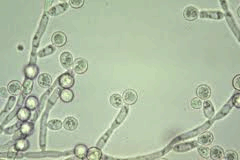Candida Questionnaire

Because the symptoms of candidiasis closely mimic other disease conditions, it can be difficult to determine if you have yeast overgrowth or not. Two strong indicators for candidiasis are:
1) Chronic, lingering symptoms of ill health that drag on despite prolonged treatment attempts, and
2) Complaints that are unrelated to anything specific. Non-specific complaints of poor health are very common in many cases of candidiasis.
The following questionnaire will help you determine if candidiasis is a health risk:
1. Do you use or have you used birth control pills?
2. Do you rely or have you relied upon antibiotic treatments to deal with infectious conditions?
3. Do you rely or have you relied upon steroids such as cortisone to treat pain and/or skin conditions such as eczema, psoriasis, or rashes?
4. Do you suffer from repeated incidents of athlete’s foot, “jock itch”, ringworm, or other fungal infections?
5. Do bloating, headaches, depression, fatigue, memory problems, impotence or lack of libido, memory problems, or muscle ache frequently bother you for reasons you can’t identify?
6. Are you unusually sensitive to tobacco smoke, perfumes, colognes and other chemical odors?
7. Do you crave sweets and treats, pastries or cookies, alcohol, and/or simple carbohydrates such as white bread, bagels or pasta?
8. Do you experience any of the following: bad breath, dry mouth, drowsiness, heartburn, mood swings, nasal congestion, postnasal drip or skin rashes?
9. Are you spacey for no apparent reason and prone to mood swings?
10. Do you experience a frequent need to urinate?
11. Is your tongue coated with whitish film indicating an ongoing toxic state?
12. If you are a woman, do you experience severe symptoms of premenstrual syndrome (PMS) and/or do you experience vaginal discharge or repeated vaginal yeast infections?
If you have answered YES to some of the above questions, it is likely that you have a degree of candidiasis. Many people are almost positive that candida is an issue for them due to both personal history and common symptoms, while others may be less clear. If you are suspect, but unsure if your condition is indeed candida-related, and answering the above questions did not clarify it for you, we encourage you to undergo appropriate testing before beginning the Candida Cleanse. This way you can be sure this cleanse is right for you, and if you do have candida, testing will show the severity of your yeast overgrowth. Candida is a growing menace in our western culture, and because of its many symptoms and variables, it is often misdiagnosed and untreated. Candidiasis may very well be the cause of your symptoms even if you answered NO to many of the above questions. The good news is that now there are testing procedures which can give you an accurate diagnosis.
One reason candida is so pervasive in our society may be that, although there is no direct evidence, it appears to be transmittable. Almost half of all healthy, sexually-active women, and one-third of all pregnant women tested, had Candida albicans. This may indicate that sexual activity itself transmits and contributes to the growth of candida, and that candida can be passed to newborns through the birth canal.
Testing for Candidiasis: ?Conventional physicians generally screen for candidiasis using traditional blood tests. These tests look for antibodies of Candida albicans and are often unreliable since we all have some degree of Candida albicans in our bodies, and therefore also have antibodies for it. Although holistic practitioners may order traditional lab tests, they do not rely on them exclusively. In addition to wanting details about your complete medical history, alternative physicians commonly use the following tests to accurately determine the extent of a candida overgrowth:
• Darkfield microscopy, also called Live Blood Cell Analysis, can pinpoint candida levels, if offered by an experienced technician. Live cell offers an in-depth view of your blood, which reveals indicators not only for candida but for immune health, allergy levels, parasite activity, immune stress, hydration levels and heavy metal toxicity, amongst other conditions.
• Electrodermal screening (EDS) is a noninvasive diagnostic technique that can detect the presence of harmful microorganisms such as Candida albicans, as well as all of the issues mentioned above. Once again, the skill level of the practitioner greatly influences the accuracy of Electrodermal screening.
• Stool analysis can help determine the levels of good bacteria in the gastrointestinal tract, as well as other digestive markers that can be indicative of candidiasis.
Darkfield microscopy and Electrodermal screening are the best methods for examining levels of candida, and are highly recommended as a screen prior to embarking on this or any Candida Cleanse. Next, read and print out the cleansing protocol.
Rife and Zapper frequencies for Candida: 0.18, 0.93, 2.50, 42.50, 71.50, 96.50, 125.75, 434.00, 642.91, 983.17


